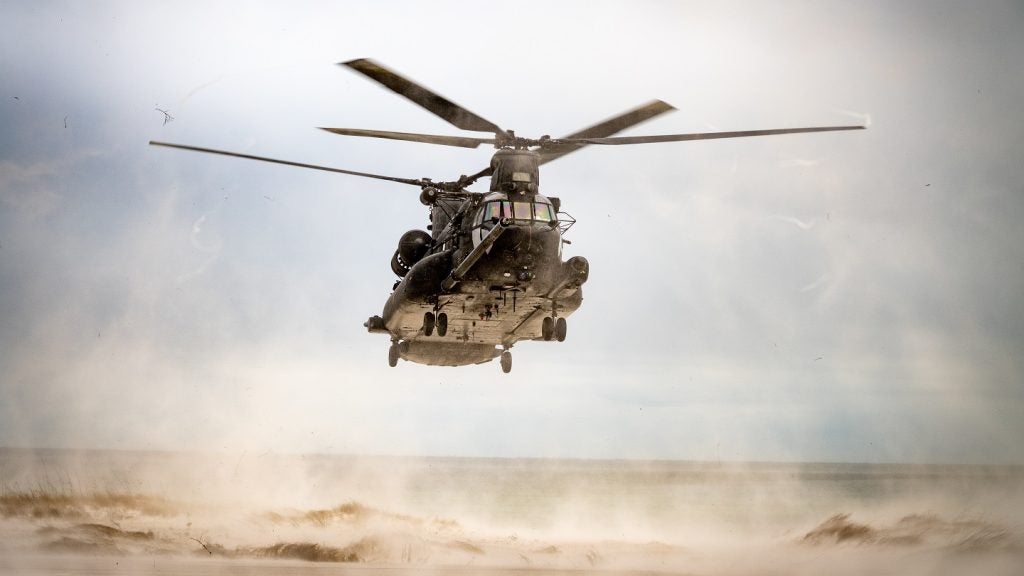US-based RTX has been awarded a $321.2m firm-fixed-price contract for the continued production and delivery of Silent Knight Radar systems and components for US Special Operations Command (USSOCOM).
Work is expected to be undertaken at two sites in the US, with a forecast completion date of 31 December 2028, according to a US Department of Defense (DoD) contract notice. In addition, $27m in Foreign Military Sales (FMS) “will be used”, although no further details were provided as to which country was also involved with the programme.
In USSOCOM service, the AN/APQ-187 Silent Knight Radar can be equipped to a number of aircraft, including the MH-47G Chinook helicopters, a special forces version of the conventional CH-47 airframe. In March this year, aircraft manufacturer Boeing was awarded another support contract worth $18.7m to help sustain USSOCOM’s M-47Gs.
The MH-47G incorporates a monolithic, machine-framed fuselage integrating long-range fuel tanks, and an extendable refuelling probe to receive fuel mid-air from fixed-wing tankers. The platform also possesses improved cargo-handling capabilities.

According to GlobalData, the US Army operates a fleet of 73 MH-47G Chinooks, acquired between 2004-2011. Other Silent Knight Radar-capable aircraft is USSOCOM service include the MH-60M Black Hawk, CV-22 tiltrotor, and MC-130H tactical transporter.
Unclassified documents on the AN/APQ-187 programme presented to industry indicate a production run of 211 radars, broken down into 69 MH-47G, 72 MH-60M, 50 CV-22, and 20 MC-130H.
The Silent Knight Radar provides safe low-level flight in adverse environments, including navigation support weather information to air crews. Specifications indicate an ability to operates at heights from 100-1000ft above ground level in straight and turning flight at speeds between 5-300kt, with rain up to 10mm/per hour.
The system is replacing the in existing AN/APQ-174, AN/APQ-186, and AN/APQ-170(Ku) systems. Initial operating capability of the AN/APQ-187 was achieved in Q3 2015.
Is the Slight Knight FMS UK-related?
Although the export of USSOCOM-operated MH-47G Chinook variant is unlikely, the UK is seeking to acquire 14 CH-47 Extended Range (ER) Chinooks from the US, in a deal worth around £1.4bn ($1.7bn) at the time of the 2021 order signing with Boeing.
The CH-47ER appears to include elements of the USSCOMOM MH-47G Block II, including the integration of additional fuel tanks to provide increased endurance. The 14 UK CH-47ERs are expected to be dedicated special forces aircraft, indicating a possible similarly in use case and equipment set up at the M-47G Block II.
However, delays to the programme have pushed the delivery of the UK aircraft to the right, with initial aspirations for the first platforms to arrive in 2026. However, this could well move into 2027, although the UK Government has repeatedly declined to provide an updated timeline.
In February this year, senior officials from the UK Ministry of Defence told the UK Defence Committee on that the revised timescale was a result of issues on the US Government’s side, which is managing the export through its FMS programme.
Initial operating capability for the UK-CH-47ERs is likely due to be achieved sometime in the 2028 timeframe.












